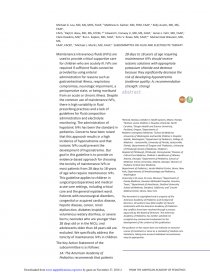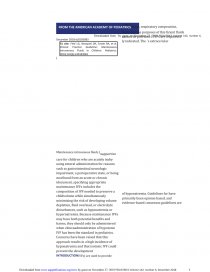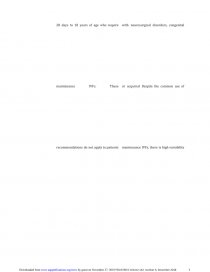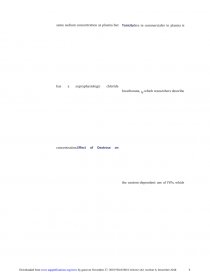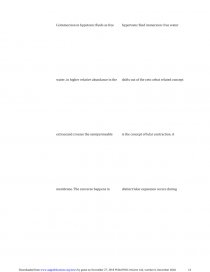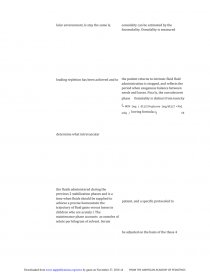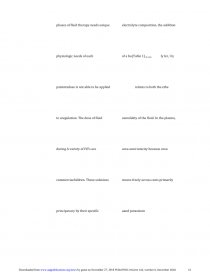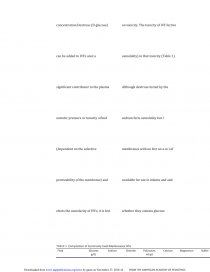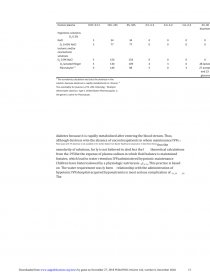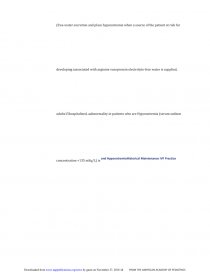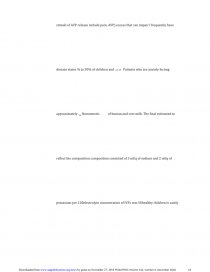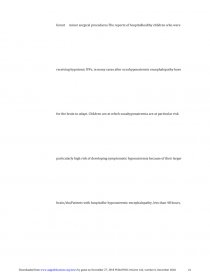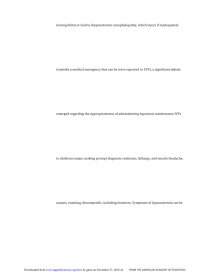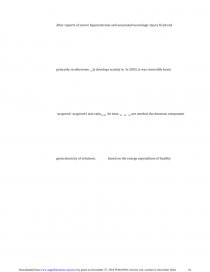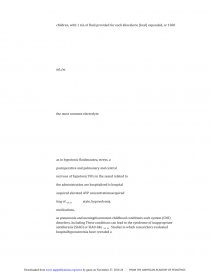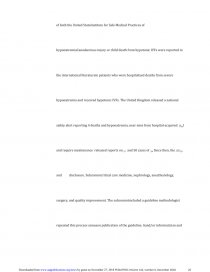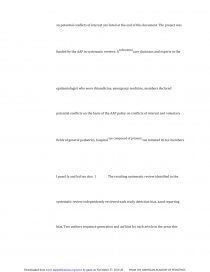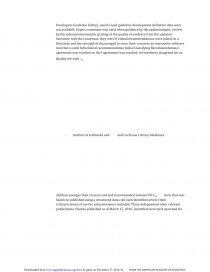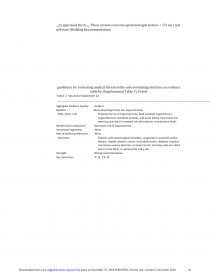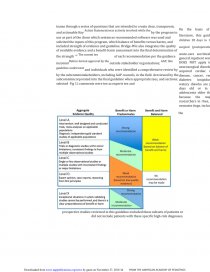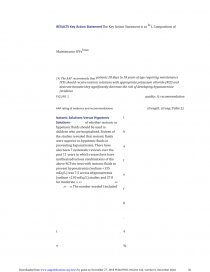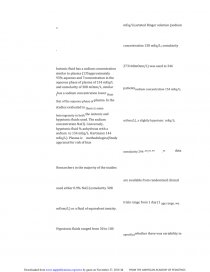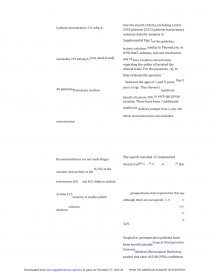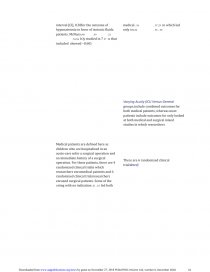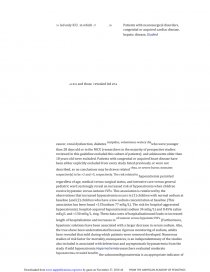Clinical Practice Guideline: Maintenance Intravenous Fluids in Children
Essay by essa • December 1, 2018 • Research Paper • 9,603 Words (39 Pages) • 1,472 Views
Essay Preview: Clinical Practice Guideline: Maintenance Intravenous Fluids in Children
CLINICAL PRACTICE GUIDELINE Guidance for the Clinician in Rendering Pediatric Care Clinical Practice GuideMaintenance Intravenous Fluids in Children line: [pic 1]
Leonard G. Feld, MD, PhD, MMM, FAAP, a Daniel R. Neuspiel, MD, MPH, FAAP, b Byron A. Foster, MD, MPH, FAAP,c
Michael G. Leu, MD, MS, MHS, FAAP, d Matthew D. Garber, MD, FHM, FAAP, e Kelly Austin, MD, MS, FAAP,
FACS, f Rajit K. Basu, MD, MS, FCCM, g,h Edward E. Conway Jr, MD, MS, FAAP, i James J. Fehr, MD, FAAP,j
Clare Hawkins, MD,k Ron L. Kaplan, MD, FAAP, l Echo V. Rowe, MD, FAAP,m Muhammad Waseem, MD, MS,
FAAP, FACEP, n Michael L. Moritz, MD, FAAP,o SUBCOMMITTEE ON FLUID AND ELECTROLYTE THERAPY
Maintenance intravenous fluids (IVFs) are used to provide critical supportive care for children who are acutely ill. IVFs are required if sufficient fluids cannot be provided by using enteral administration for reasons such as gastrointestinal illness, respiratory compromise, neurologic impairment, a perioperative state, or being moribund from an acute or chronic illness. Despite the common use of maintenance IVFs, there is high variability in fluid prescribing practices and a lack of guidelines for fluid composition administration and electrolyte monitoring. The administration of hypotonic IVFs has been the standard in pediatrics. Concerns have been raised that this approach results in a high incidence of hyponatremia and that isotonic IVFs could prevent the development of hyponatremia. Our goal in this guideline is to provide an evidence-based approach for choosing the tonicity of maintenance IVFs in most patients from 28 days to 18 years of age who require maintenance IVFs. This guideline applies to children in surgical (postoperative) and medical acute-care settings, including critical care and the general inpatient ward. Patients with neurosurgical disorders, congenital or acquired cardiac disease, hepatic disease, cancer, renal dysfunction, diabetes insipidus, voluminous watery diarrhea, or severe burns; neonates who are younger than 28 days old or in the NICU; and adolescents older than 18 years old are excluded. We specifically address the tonicity of maintenance IVFs in children.
The Key Action Statement of the subcommittee is as follows:
1A: The American Academy of Pediatrics recommends that patients 28 days to 18 years of age requiring maintenance IVFs should receive isotonic solutions with appropriate potassium chloride and dextrose because they significantly decrease the risk of developing hyponatremia (evidence quality: A; recommendation strength: strong)
abstract
[pic 2]
aRetired, Nicklaus Children's Health System, Miami, Florida; bRetired, Levine Children’s Hospital, Charlotte, North Carolina; cOregon Health and Science University, Portland, Oregon; lDepartment of
Pediatric Emergency Medicine, dSchool of Medicine, University of Washington and Seattle Children’s Hospital, Seattle, Washington; eDepartment of Pediatrics, College of Medicine – Jacksonville, University of Florida, Jacksonville, Florida; Departments of fSurgery and oPediatrics, University of Pittsburgh School of Medicine, Children's
Hospital of Pittsburgh, Pittsburgh, Pennsylvania; gDivision of Critical Care Medicine, Children’s Healthcare of Atlanta, Atlanta, Georgia; hDepartment of Pediatrics, School of Medicine, Emory University, Atlanta, Georgia; iDivision of Pediatric Critical Care Medicine,
Department of Pediatrics, Jacobi Medical Center, Bronx, New
York; Departments of jAnesthesiology and Pediatrics, Washington
University in St Louis, St Louis, Missouri; kDepartment of Family Medicine, Houston Methodist Hospital, Houston, Texas; mDepartment of Anesthesia, Stanford University School of Medicine, Stanford, California; and nLincoln Medical Center, Bronx, New York
This document is copyrighted and is property of the American Academy of Pediatrics and its Board of Directors. All authors have filed conflict of interest statements with the American Academy of Pediatrics. Any conflicts have been resolved through a process approved by the Board of Directors. The American Academy of Pediatrics has neither solicited nor accepted any commercial involvement in the development of the content of this publication.
The guidance in this report does not indicate an exclusive course of treatment or serve as a standard of medical care. Variations, taking into account individual circumstances, may be appropriate.
[pic 3]
Downloaded from by guest on November 27, 2018 PEDIATRICS Volume 142, number 6, December 2018:e20183083 |
To cite: Feld LG, Neuspiel DR, Foster BA, et al. Clinical Practice Guideline: Maintenance Intravenous Fluids in Children. Pediatrics. 2018;142(6):e20183083
i
Maintenance intravenous fluids (supportive care for children who are acutely isuby using enteral administration for reasons such as gastrointestinal neurologic impairment, a perioperative state, or being moribund from an acute or chronic idocument, specifying appropriate maintenance IVFs includes the composition of IVF needed to preserve a childvolume while simultaneously minimizing the risk of developing volume depletion, fluid overload, or electrolyte disturbances, such as hyponatremia or hypernatremia. Because maintenance IVFs may have both potential benefits and harms, they should only be administered when clinicaadministration of hypotonic IVF has been the standard in pediatrics. Concerns have been raised that this approach results in a high incidence of hyponatremia and that isotonic IVF could prevent the development INTRODUCTIONIVFs) are used to provide critical lness, respiratory compromise, lness. For the purposes of this ficient fluids cannot be provided l. IVFs are required if ly indicated. The ’s extrace lular
...
...

